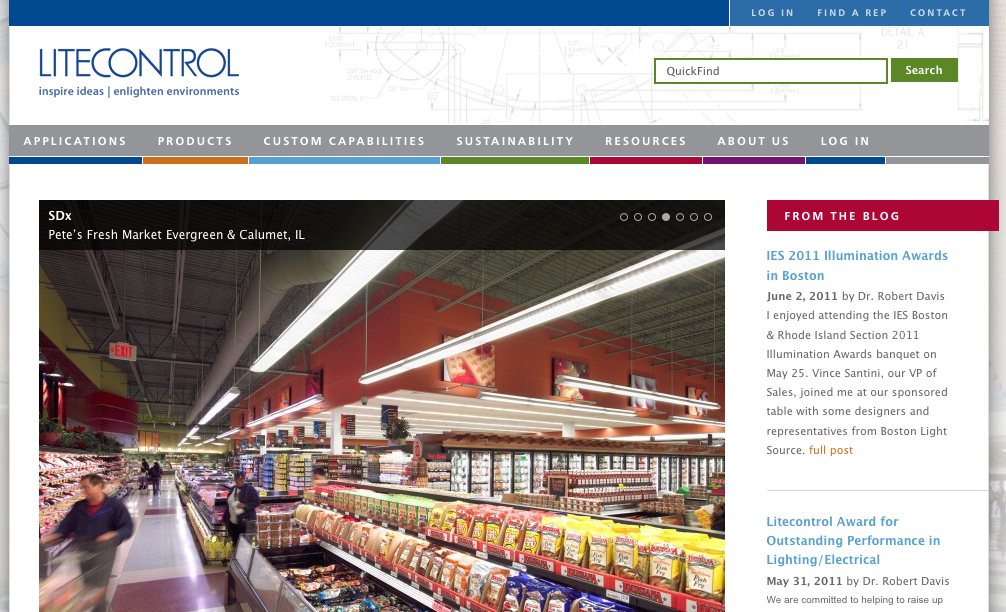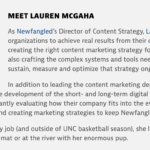Monday, June 6th was a great day at Newfangled. Litecontrol, one of our best and longest-tenured clients, went live with the new website we built for them. If it weren’t for our content strategy, we very well might not have gotten the job.
Litecontrol first hired us in 2000 to rebuild their public site. In 2005, we did a basic redesign of the site’s skin, but we didn’t touch any of the site’s underlying functionality. In 2010, they decided it was time for a complete rebuild, and, for the first time in a decade, we had to compete for their business.

Litecontrol was the first big project I had both managed and programmed at Newfangled, and I’ve always really enjoyed our relationship with them. We’ve lost plenty of clients over the years that were no longer a good fit because of the way we or they had changed, and I see most of those departures as healthy points of transition and growth. Litecontrol was a different story, though. They had the right budget, the right people on board, the right need, and we had just the right expertise to build them a site that would dominate their space. I wanted to win this job, and I wanted to win badly.
Our position as the incumbent was a null factor. They had always liked us and our work, so there weren’t any problems there. But, ten years is a long time. Maybe, they thought, a fresh start with a new developer would be a healthy move to make. So, I quickly found myself in a pretty competitive situation, which required a significant sales effort. We were competing against a few firms that were both bigger than us and much closer geographically to Litecontrol. In the end, we won the job, but it was close…very close.
Whenever we win or lose a job I always inquire as to why. Litecontrol had a few reasons for hiring us, but there was one very distinguishing aspect of our involvement in the sales process that helped us to stand out—our content.
After I flew up to meet with the decision makers for the project, I mailed them each a copy of the anthology we had just printed of the past year of newsletters Chris Butler had written. In the past, I would follow up a meeting like this with an email with a few links to articles on our site that were relevant to the conversation we had just had. I always had the feeling that no one ever followed those links. I thought sending a physical book might be different, though. As it turns out, it was.
When they received the books, they sent an email to thank me. A few weeks later—prior to being awarded the job—I found out that they had read them in their entirety. Where my old emails with links would get archived within minutes of being received, the books sat on their desks. There they were, a subtle reminder of our expertise.
When Litecontrol described their selection process to me, they brought up the books a few times. The clear demonstration of expertise and communication skills the books represented gave us a consistent edge over our competition, enough of one to win the work.
The beauty of this example of content at work is that the book was wholly comprised of content we had already created. If you’ve ever heard me give a talk, you’ve probably heard me say that “content is repurposeable and leads to opportunity.” This example here is exactly what I’m talking about when I say that. I could have sent Litecontrol an email with clear links to the exact same content that the books I mailed contained. The physical form is what made the difference. Who knows how we might reuse the tens of thousands of words of content we have on our site in the future. We embarked on our content strategy over ten years ago when we wrote our first newsletter. At that point we could have never imagined creating a book of our newsletter content, and who knows what might become of it in the future. The point is, those words—all of them—are repurposeable and fully-owned assets. Once again, this proves that an investment in one’s content strategy is not a shallow investment for a short-term, one-off gain. It is a singular investment that has endless possibility.


